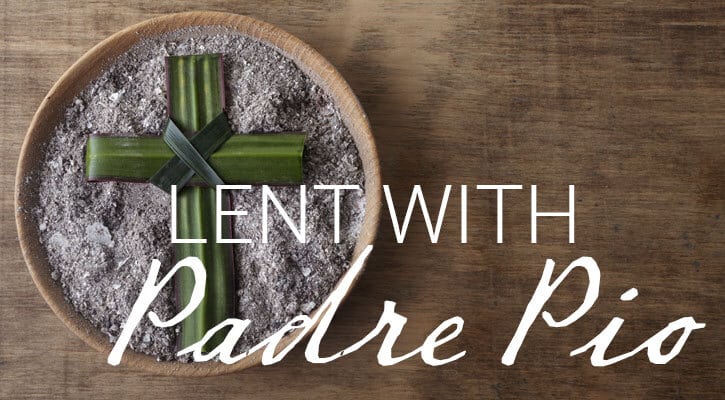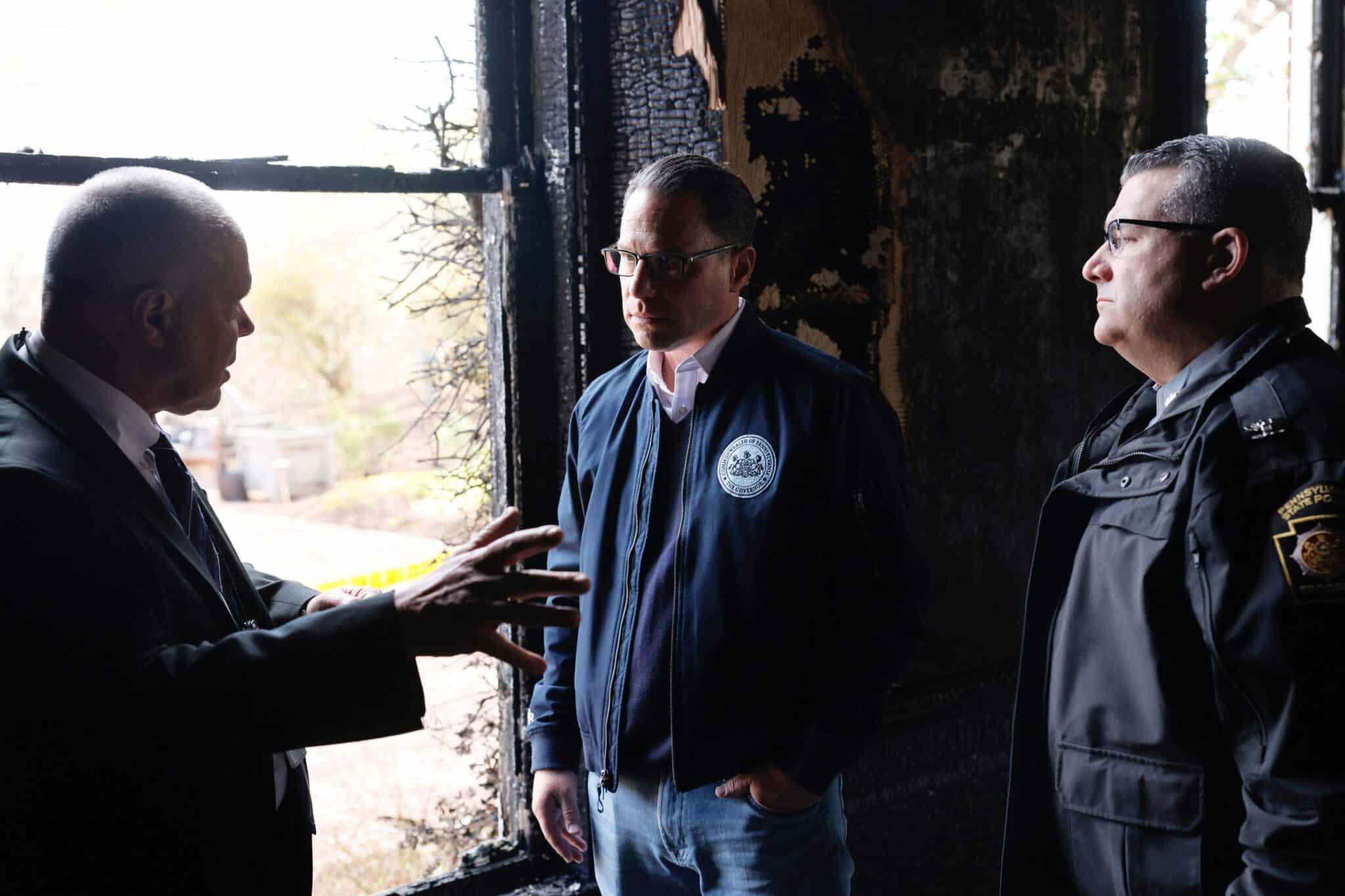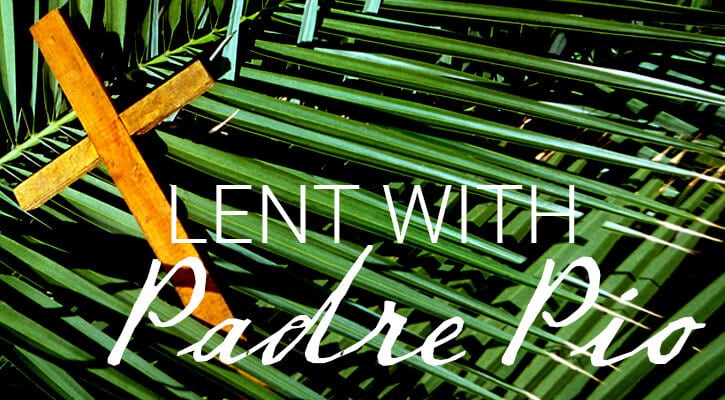Edith Stein hardly seemed Catholic-saint material. She, a precocious Jewish child, rejected God as a teen at the turn of this century in Breslau, Germany (now Wroclaw, Poland). But even as a child Edith was, at heart, a radical, one who goes to the radix, the roots. When she became convinced of the truth of an idea, her life fell into place around it.
Her youthful unruliness ended, for example, when she became intellectually convinced that her mother’s and sister’s guidance would be good for her that at age seven. But she rejected her mother’s Jewish piety. She later rejected God because she saw little evidence that most believers, whether Jew or Christian, really believed. If there was nothing there, she wasn’t going to play the game.
But there was something there for Edith, even as World War I unfolded and then the Nazi movement. That something led to a remarkable life of faith, cut short at age 51 by her gas-chamber murder at Auschwitz.
Pope John Paul II canonized her as Saint Teresa Benedicta of the Cross, confessor and martyr, on October 11, 1998.
Is canonizing a Jew-turned-Catholic an insult to Judaism? Some Jewish people think so. The tragedy of the Holocaust is so great that efforts to memorialize Edith Stein’s death at Auschwitz have been controversial. What did her life and death mean?
St. Anthony Messenger interviewed three people who have been deeply involved in the life of Saint Teresa Benedicta. One is the father of Teresia Benedicta McCarthy, a Boston-area child who was miraculously cured in 1987 through Saint Teresa Benedicta’s intervention. That miracle, verified by the Sacred Congregation for the Causes of Saints, allowed this month’s canonization.
The second interview is with Carmelite Sister Josephine Koeppel, whose life work has been translating the writings of Edith Stein into English.
Finally, philosopher and scholar Dr. Marianne Sawicki explains that Edith Stein’s philosophical insights offer an ongoing contribution to Western thinking. That intellectual gift might have been on Pope John Paul’s mind over the years as he has encouraged her cause.
A Promising Student
Edith Stein was a brilliant woman who, in her 20’s, joined Europe’s leading philosophers. She was attracted to the philosophy of Edmund Husserl, father of a philosophical school that sought to explain the connection between the visible world and the world of ideas and values. Husserl’s student Martin Heidegger became a giant in Western thinking. Another student, Max Scheler, was the doctoral-thesis subject of Karol Wojtyla (later Pope John Paul II).
Existentialism, an influential school of thought, has its roots in Husserl’s thinking. Stein studied under Husserl and, as his assistant, prepared his papers for publication.
Along the way she studied with Christian intellectuals. She was particularly influenced by the faith of the widow of a friend and professor, Adolf Reinach, who was killed in World War I. At age 30, in 1921, she picked up the autobiography of Saint Teresa of Avila in a friend’s library and couldn’t put it down. “This is the truth! ” she told herself upon completing the book. For Edith Stein, that meant irreversible change.
She was baptized in 1922 and subsequently left her university appointment as Husserl’s assistant. In her day, a woman could not expect a full academic career at a top university. She took a position teaching at a Dominican college for women teachers in Speyer, Germany. Although she desired to become a Carmelite, she was advised to wait because her conversion had been so hard on her mother. She took private religious vows.
At Speyer she studied the philosophy of Thomas Aquinas and translated his treatiseThe Truth into German for the first time. Soon she began lecturing widely in Europe, to women’s groups, on the education and role of Catholic women.
When the Nazis blocked her, as a Jew, from teaching, she was forced to make a life-changing decision. To her mother’s dismay, she entered the Carmelites as Sister Teresa Benedicta of the Cross. As a Carmelite she wrote, among other works, Life in a Jewish Family and The Science of the Cross, a study of Saint John of the Cross. She led a deliberate life of holiness and self-offering. The Nazis forced her to wear a Star of David.
As the safety of anyone with Jewish heritage evaporated, she fled from her Carmelite monastery in Cologne to Carmel in Echt, Holland. But there was no escape. When the Dutch bishops spoke out against the Nazis, the Third Reich retaliated by rounding up all Jewish converts to Catholicism in Holland. In a filthy, crowded boxcar they were transported to Poland.
Edith was murdered in the gas chambers of Auschwitz on August 9, 1942. Her sister Rosa, who had also converted and who stayed close to Edith, was killed with her.
A Child Is Saved
Forty-three years later, to the day, a girl was born across the Atlantic. In honor of Edith Stein, her parents named her Teresia Benedicta (the Latin spelling that Edith used). “God communicates not just through words but through symbols and actions,” says Melkite Father Emmanuel Charles McCarthy, the girl’s father. The day I interviewed him he was fasting and praying in the presence of Trinity Test Site, New Mexico, on the anniversary of the first atomic blast, July 16, the feast of Our Lady of Mt. Carmel. “Everything in life is context,” he says. He’s speaking to St. Anthony Messenger about the miraculous cure in 1987 of his daughter Benedicta after doctors at one of the nation’s finest hospitals, Massachusetts General, pronounced her case hopeless.
The events were simple enough on the surface. While Father Charles and his wife, Mary, were away from their Brockton, Massachusetts, home for a few days on a religious retreat, the college-aged oldest of the 12 McCarthy children was in charge. The flu was going through the family and the teenagers were taking Tylenol. Two-year-old Benedicta watched and imitated. Over two days a deadly overdose of the drug built up in her system.
Upon their return, Father Charles and Mary learned that Benedicta was in the hospital. She was moved from Brockton to Massachusetts General in Boston. There doctors found her liver to be hopelessly damaged. Without a transplant, she would die.
In the face of this grief, Mary’s sister Teresa made a suggestion: “You named Benedicta after Edith Stein, so why not pray to her?” The rosaries and prayer chains started among the McCarthys’ family and friends on a Saturday.
The next day Father Charles was scheduled to fly to North Dakota to give a retreat on the nonviolence of Jesus. You would have to know Father Charles to understand the dilemma he felt. He is a theologian who takes mysticism seriously. A cofounder of Pax Christi U.S.A., he has devoted his entire adult life to a ministry of preaching absolute trust in Jesus and the message of the gospel. “No one would want to be in the state of mind I was in when I made that decision, ” he recalls. “But all the years of nonviolence, of preaching trust in Jesus, how can you not trust God?” he asks.
Late Saturday night he and Mary returned home to check in on the other children. “I walk into the room and I see a book on the floor. I pick it up to put it on the shelf and look at it, 12:00 at night, Saturday. It’s Saint Teresa of Avila’ Way of Perfection. A sentence jumps off the page, Jesus talking to Teresa, and he says, ‘You take care of my business and I’ll take care of your business.’ That answered the question for me of whether or not to go.”
Two days later, at exactly the hour his retreat concluded, on March 24, 1987, says Father Charles, doctors in Boston recorded on Benedicta’s medical chart, “‘This child has made a remarkable recovery.'” ABC’s 20/20 Thursday aired the McCarthys’ story in June of this year in a show about canonization. The head of pediatrics at Massachusetts General Hospital, a Jewish man who ultimately testified to the Congregation for the Causes of Saints, was one of several medical staff who agreed that they could in no way explain Benedicta’s recovery. It was indeed a miracle.
Soon after the miracle, the editor of The Church World, the Catholic diocesan newspaper in Maine, heard the story while attending a talk by Father Charles and made a front-page story of it: “A Miracle for Edith Stein?” She was already to be beatified May 1, 1987, as a martyr, thus without need of a proven miracle. But a miracle would be needed for canonization. When Rome officials heard of the alleged miracle, they began an investigation that ultimately confirmed the miracle’s authenticity in 1997.
A Miracle for Nonviolence?
Father Charles, acting rector of Saint Gregory the Theologian Seminary in Boston, is fond of quoting the famous teacher Rabbi Abraham Heschel: “‘The most important things happen on the invisible side.'” It is in this mystical dimension that he finds the meaning of the miracle of his daughter’s cure. A lot of it has to do with the date of August 9.
By the time of his 1981 ordination in Damascus, Syria, he had already devoted years to his ministry of teaching about gospel nonviolence. He had waited all summer in Damascus for the Melkite patriarch to ordain him and the calendar finally yielded August 6 for his ordination to the diaconate and August 9 for his ordination to the priesthood. Those dates already stood out for him as the anniversaries of the nuclear destruction of Hiroshima and Nagasaki in 1945, which he considers dark days for Christianity.
Over the years he took an interest in things that happened on August 9, like the execution of the Catholic German war resister Blessed Franz Jagerstatter. In the early 1980’s, when Father Charles noticed that Edith Stein died on August 9, he began reading about her. “For the next two months, I read pretty much all day, every day, on Edith Stein. I came to the conclusion that Edith Stein was in microcosm what Nagasaki, the cradle of Christianity in Japan, was in macrocosm. In other words, here was a Christian woman who was destroyed by Christians. Auschwitz was an operation run entirely by baptized Christians,” explains McCarthy. “So was the bomb crew that destroyed Nagasaki.”
When he read of Edith’s own awareness that she was born on Yom Kippur, the Day of Atonement, “I said, ‘This person is like the incarnation of nonviolence!'”
It is key to McCarthy that Stein had formally consecrated her life, before her Carmelite superiors, to atonement and to world peace. Edith herself wrote, “I talked with the Savior and told Him that I knew that it was His cross that was now being placed on the Jewish people; that most of them did not understand this, but that those who did would have to take it up willingly in the name of all. I would do that. He should only show me how. “
When the McCarthys’ 12th child was born on August 8, 1984 ( “sunrise, August 9, at Auschwitz,” recalls Father Charles), they decided to name her Teresia Benedicta. “Teresia is the Latin form that Edith Stein always used, ” explains Father Charles. “Teresia Benedicta a Cruce literally means, ‘Teresa Good Word of the Cross.'” (Another translation is “blessed by the cross.”)
There are no coincidences in life, believes Father Charles. “God presents us with situations in which we freely choose.” That’s why the context of events is critical to him. “The context of the miracle is a context of a whole life committed to nonviolence, the context of a child being named after someone because that someone is a microcosm of the problem and the solution to Christian violence. That’s the context, whether anyone wants to accept it or not.
“I realize that 95 percent of the Catholic Church at every level does not accept Jesus’ teachings of nonviolence,” he laments. “But Edith Stein wouldn’t be Edith Stein if, when they came to arrest her, or when she was in Auschwitz, she was killing people to save her life. She’s a martyr because she made a choice to put down the gun and pick up the gospel, because she chose the power of love over the power of violence and accepted the consequences of it.”
A Life of Virtue
But Edith Stein was not only a martyr. Carmelite Sister Josephine Koeppel has a different vision of Edith Stein’s significance. “The characteristics that I notice have to do with her womanhood, and particularly European womanhood,” says the 77-year-old Swiss immigrant to the United States.
When Carmel of Cologne wanted to thank their sister Carmel community in Elysburg, Pennsylvania, for sending assistance after World War II, they had sent along a copy of The Life of Edith Stein, written by Edith’s prioress.
Sister Josephine was the only one in her Carmelite community who could read German in 1950, when the book arrived in Pennsylvania. “I read the book and related it to the sisters during their recreation time,” she recalls in a telephone interview from her cloister. Sister Josephine became interested in Edith Stein and asked relatives in Switzerland to send one of Stein’s books.
She soon received Stein’s Life in a Jewish Family. In addition to translating works of Thomas Aquinas and John Cardinal Newman into German, Stein had, in the 1930’s, been asked by her superiors to write about her family. The hope, as Edith explains clearly in her Foreword, was that German readers, who were being deprived of accurate information, would see that Jewish families were not that much different from other German families. Sister Josephine became convinced that others should read the book, so she set out to publish a translation.
Nearly 50 years later, she has translated that book, plus a book containing most of Edith Stein’s letters, and built a library of information on Stein that she intends to donate to a center for the study of Edith Stein at Spalding University in Louisville, Kentucky. Stein herself wrote enough to fill 17 volumes. Sister Josephine’s translations are two of the five that are in English. More translations are in the works. “I translated because I thought this was somebody people had to know,” she says.
Edith Stein looked back on herself as a youth and called herself “‘charmingly malicious,'” says Sister Josephine. “She would notice people’s faults and think it was her privilege to point them out.” Yet Stein left that behind as she grew older. It is her growth in virtue that Sister Josephine homes in on.
“She was not a retiring person; she just never put herself forward,” recounts the translator of Stein’s letters. “She was always there for anyone who came to her. Whenever she heard of something that could be done for somebody, she did it or saw that it was done.”
Edith Stein kept a broad correspondence from her cloister in Cologne, documented in the book Self-Portrait in Letters, which Sister Josephine translated. “These people treasured her letters when they received them. It’s remarkable that so many are available after all this time, in so many different life situations,” says Koeppel.
Although Stein is only beginning to be known in the United States, she has a vast following in Europe. “That’s because of her personality in the first place,” says Sister Josephine. “People who read about her think of her as a B-R-A-I-N, but in Europe she was remembered most of all by the students who had her as a teacher.”
Stein had a special place in her heart for young children, says Sister Josephine, which she thinks is related to the 1987 miracle of young Benedicta McCarthy. “I believe that Edith would have a great interest in all the prayers offered for children, because she had a tremendous love and an absolutely charismatic rapport with children, including her nieces and nephews.” On a trip to Europe a few years ago, Sister Josephine learned of another miracle from the Dominican sisters at Speyer, Germany, where Stein taught.
This, too, concerned a little girl, some years back, who was deathly ill and was suddenly cured. “The little girl told her mother, ‘Sister came to see me and she made me well,'” tells Sister Josephine. “So her mother, thinking this was delirium or something, asked what the sister looked like. The girl said she was dressed in brown. She asked whether she said who she was. The girl said, ‘She was Sister Teresia Benedicta something. I can’t remember what the last part was.’
“The mother had gone to school at Speyer and knew about Edith Stein, so she told the sisters. They sent the mother back with more questions about the last part of the name. She asked was it ‘of the cross’ (in German)? ‘No,’ answered the girl. ‘A cruce?’ ‘Yes, that’s it!’ said the little child.” Sister Josephine recounts that the girl was too young to know Latin, but that Edith Stein never used her title except in Latin. This German miracle was not documented by Church officials.
Sister Josephine recommends, “You really can get to know her as a person with a heart that really can be touched. First, get to know her as that. Then really respect her brilliance.”
Intellectual Giant
It is that sense of empathy that defines Edith Stein most clearly for Dr. Marianne Sawicki, who, as Dr. Stein did, teaches philosophy. Dr. Sawicki is currently a research fellow at the Erasmus Institute at the University of Notre Dame and has written a scholarly book on Stein. In Edith Stein, Dr. Sawicki sees a woman whose ideas have much to offer our world.
Stein’s fundamental insights in academic philosophy were in a field of study called empathy theory. This was during an explosion of new knowledge when philosophers were trying to combine knowledge about the physical world with knowledge about the mind, explains Dr. Sawicki. Philosophers who followed Edmund Husserl, called “phenomenologists,” saw empathy as an awareness of basic, human interconnection as the breakthrough for human communication. The Nazis set out to replace this philosophy with their own philosophy of racial superiority.
“There are answers in empathy theory about the basis of human communication that were put on the shelf, tragically, in the 1930’s,” Dr. Sawicki observes. “The questions today are, how can people of different cultures, different classes, different genders, ever find some point of agreement that we can go forward on to build a just society?” Edith Stein discovered answers both in secular philosophy and, later, in Christianity. Those insights could serve to build greater understanding in the world today, says Sawicki.
In God’s Hands
Though many felt that Edith had abandoned Judaism, Edith Stein, in her own opinion, remained loyal to her Jewish family and heritage to her death. She predicted the Holocaust and wrote an appeal to Pope Pius XI, pleading for an encyclical to oppose the Nazi program.
Her niece, Susanne M. Batzdorf, has written of Edith, “In following her conscience on the road to Christianity she felt that she was pursuing her Jewish path to its ultimate goal. But it is impossible, from the Jewish perspective, to see it that way.” That is understandable. Far from elevating Edith Stein as a put-down to Jews, the Church seeks to honor and imitate a woman who heard an intimate call from Jesus and followed it. Her letters show that she continued to honor her mother’s Jewish faith.
It should be obvious by now that Edith Stein, Teresa Benedicta of the Cross, is a saint whom we’ve only begun to understand. Both Sister Josephine and Dr. Sawicki mentioned that Stein’s appeal in so many areas is a sign of her sanctity.
The theme that seems to be universally appreciated throughout Edith Stein’s life is her integrity, her appreciation for truth. That’s what really makes her saintly, says Sister Josephine. “If you want somebody who embodied ‘reality check,’ that’s Edith, ” says Sister Josephine. “Any time in her life that she saw a truth that she hadn’t realized before, her life changed.”
The other big theme is trust. Stein wrote in a letter that she often was asked to lecture on complicated topics, “but I always come down to my one topic: how important it is to learn to live at God’s hands.'” Sister Josephine says that is Edith Stein’s signature phrase: Learn to live at God’s hands.









5 thoughts on “The Life and Legacy of Edith Stein”
Thanks so much for this commentary on Edith Stein, Saint Teresa Benedicta of the Cross. My wife and I are attending a class on Catholicism based upon a series of talks on the Church given by Bishop Robert Barron. Bishop Barron is a communicator of the faith, par excellence. However, the presentation on Edith Stein was abbreviated. Most of us, and probably most of the faithful, know little about Edith Stein. We were left wondering what made her so different than other Catholics devoted to Christ and his Cross who likewise have been martyred. I found myself doing my own research which included these informative interviews of this beautiful saint. Now I get it.
At 78 years of age, only just discovered her, doing the novena now
At what point one decides to break away from the worldly journey – which is always a journey into the darkness of the heart – and take to the unknown road which may lead to nowhere There is a hope that you may find that elusive Being who alone can put you to rest, soothe your restless spirit,but there is a greater danger that you may fall into a bottomless pit,never to recover
The life of Edith Stein was explained to us in 1988 for the first time by Fr Mc Carthy. He was touring Ireland and making us awaire that Christians must replace JUST WAR THEORY with Christian Non Violence
Awed by her spiritual and intellectual scope and depth..her humility and courage in submission to His Will….
Comments are closed.